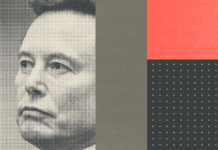For example, at 17 rural K-12 schools in Wisconsin, just seven out of 191 coronavirus cases resulted from in-school transmission. In 11 North Carolina school districts with more than 90,000 students and staff members, just 32 infections were acquired in schools during nine weeks of in-person instruction. There were no cases of student-to-staff transmission.
“[T]he preponderance of available evidence from the fall school semester has been reassuring,” wrote three CDC researchers in a piece published yesterday in the Journal of the American Medical Association. “There has been little evidence that schools have contributed meaningfully to increased community transmission.”
There have been indications all along that kids transmit the virus less than adults.
But the evidence has been virtually ignored in many school districts, many of which started out the school year with virtual-only learning and then, as they tried to return to the classroom, faced an outcry from teachers unions.
As I wrote in August, a U.K. study found very few coronavirus cases when the nation sent hundreds of thousands of kids back to school. And here, I looked at a database created by Brown University professor Emily Oster, which has shown extremely low infection rates in both public and private schools.
When I asked Oster about the studies released this week, she said they’re helpful because they show the safety of reopening schools “in a very concrete way.”
“This is something we strongly suspected from the existing data but haven’t seen as directly,” Oster wrote in an email.
“Going forward, this suggests to me that we can start with the assumption that schools are relatively safe locations,” she added.
Yet around the country, teachers unions are still resisting in-person teaching.
Some are rejecting classroom instruction even as teachers get priority access to the vaccines.
In Fairfax County, Va., where vaccination of teachers and administrators began a week ago, the school board is delaying reopening under pressure from the union. Fairfax Education Association President Kimberly Adams, who has received a first vaccine dose, said her union won’t support a return to full-time, in-classroom learning even in the fall.
In an op-ed for The Washington Post, Fairfax County parent Rory Cooper questioned whether teachers should be prioritized if they’re not willing to go to work.
“That raises the question of why they have the priority placement to begin with, and whether these vaccinations should be immediately halted so that high-risk individuals or public servants who have been working outside of their homes for the entirety of the year have access,” Cooper wrote.
Public schools in Montclair, N.J., were supposed to reopen for partial in-person learning on Monday. But the district abruptly reversed course late Friday after the township’s powerful teachers union stepped in, the New York Times’s Tracey Tully reports.
In Chicago, the teachers union voted over the weekend to resist a planned Monday return to in-person instruction, forcing Chicago Public Schools to delay things as negotiations continue.
And in Maryland, Gov. Larry Hogan (R) has threatened consequences for school districts that refuse to start bringing students back for in-person classes by March. “A growing consensus has emerged, both here in Maryland and across the country, that there is no public health reason for county school boards to keep students out of schools,” Hogan said at a news conference last week, pointing to data showing Maryland students are falling behind academically.
Tim Carney, a columnist for the Washington Examiner:
The Biden administration has called reopening schools a priority.
President Biden has promised to reopen most K-12 schools during his first 100 days as president.
“To try to reopen schools, Biden has asked Congress for $130 billion to help offset costs and promised better guidance from his administration on how to do so safely,” Laura writes. “President Donald Trump also pushed schools to open, though provided little guidance, data collection or funding to help them.”
His nominee for education secretary, Miguel Cardona, has affirmed Biden’s goal.
“I think it’s strong leadership,” Cardona told Connecticut Public Radio this week, when asked whether the goal was “too optimistic.”
Ahh, oof and ouch
AHH: A large percentage of nursing home workers in D.C., Maryland and Virginia have declined to take the coronavirus vaccine.
In an internal document obtained by The Post, Maryland health officials said that as of Tuesday, only about 58 percent of the doses allocated to nursing home staff and residents had been administered — even though vaccination clinics have been conducted at every facility.
Tredonna Kum, an administrative organizer for a union representing nursing home workers in Maryland and D.C., estimated that up to 80 percent of members chose not to be vaccinated during the first wave of clinics.
“One of the surprises in the first three weeks was that in health care and in the nursing homes, there was about a 35 to 50 percent uptake. … We had expected closer to 80 or 90 percent uptake,” Maryland’s acting health secretary Dennis R. Schrader told state lawmakers this week.
OOF: An initial vote on a coronavirus relief bill could come as soon as next week.
Senate Majority Leader Charles E. Schumer (D-N.Y.) said the Senate could vote soon on a budget resolution setting the stage for passage of Biden’s $1.9 trillion coronavirus relief plan.
“Publicly, the Biden administration is courting Republican support, and Schumer held out hope of GOP backing. But a number of leading Republicans including McConnell have panned Biden’s plan as too costly, and behind the scenes Democrats are making plans to move forward without them,” Erica Werner, Mike DeBonis and Seung Min Kim report.
“The resolution would instruct committees to write legislation codifying Biden’s $1.9 trillion pandemic relief plan. Under special rules governing the budget resolution, the resolution could pass the Senate with a simple majority vote, and the subsequent covid-19 relief bill could also pass with a simple majority — even without eliminating the filibuster,” they continue.
Democrats are eager to move on a bill before the Senate is set to convene the week of Feb. 8 to start former president Donald Trump’s impeachment trial.
Senate Democrats and Republicans have reached a power-sharing arrangement for operations of the chamber, which is split 50-50 between the two parties. Minority Leader Mitch McConnell (R-Ky.) had pushed for assurances from Democrats that they would not seek to eliminate the filibuster, but Schumer refused. McConnell allowed the power-sharing agreement to go through after two centrist Democratic senators publicly stated that they would vote to uphold the filibuster.
OUCH: Officials haven’t said how the U.S. will enforce its coronavirus travel restrictions.
A new executive order from the Biden administration requires anyone seeking to enter to the United States, including Americans returning home, to secure a negative coronavirus test before travel and to self-quarantine for seven days upon arrival, Shannon McMahon reports. Biden also announced that he will implement or extend bans on travel by noncitizens from Britain, South Africa, Brazil and much of Europe.
Commercial airlines are expected to help enforce the testing requirement for international travelers who do make it to the United States. But it’s unclear how or if officials will take steps to enforce the quarantine. Biden’s executive order has asked federal agencies to come up with plans to assist.
“Health agencies in nations with low coronavirus rates, such as Australia, New Zealand and parts of China, have since the beginning of the pandemic worked alongside law enforcement to require quarantines at designated facilities,” Shannon writes.
Most other countries also require more accurate PCR lab testing for the coronavirus before travel. The United States is one of few countries to allow for less-accurate rapid antigen tests.
The United States is not the only country to ramp up travel restrictions in an effort to prevent the spread of new, more contagious strains of the virus. New Zealand has said that it may keep its borders closed for much of the year, and the United Kingdom may start channeling new arrivals into quarantine hotels.
The race to vaccinate
The Biden administration says it’s on the cusp of securing 200 million more vaccine doses from Pfizer and Moderna.
“Because both products — one developed by Pfizer and German company BioNTech, and the other by Moderna — are two-dose regimens, that would be enough to fully vaccinate 300 million people. An estimated 260 million people in the United States are currently considered eligible to receive a coronavirus vaccine, although Pfizer and Moderna have initiated trials for children as young as 12, the results of which could expand the pool,” they write.
Both companies have already committed to delivering 200 million vaccines each to the U.S. government by June.
The increased supply, if the United States is able to secure it, could help speed the return to normal life later this summer and fall. And while a new deal would not address immediate vaccine shortages, companies have already ramped up manufacturing to meet their existing targets. This will allow the federal government to increase its vaccine allocations by about 16 percent.
The government, under the Trump administration, has also contracted with several other vaccine-makers – including AstraZeneca and Johnson & Johnson — for hundreds of millions of doses. Those vaccines are still in the approval process.
Hundreds of Biden staffers have received the coronavirus vaccine.
Biden’s White House medical team has already vaccinated several hundred staffers who work on site and plans to vaccinate all in-person staff members over the next few weeks, Axios reports.
The push to vaccinate staff members is part of a broader effort to ramp of pandemic protocols, which also include requiring daily coronavirus tests and mandating N95 masks at all times.
White House spokesman Kevin Munoz told Axios the vaccines are meant “to ensure a COVID-safe working environment around the president and key leaders who have national security and continuity of government responsibilities.”
There’s a limit to how quickly the world can ramp up vaccine production.
Biden has said he will invoke the Defense Production Act to increase vaccine production, amid calls from advocates and lawmakers to increase the speed of the nation’s vaccine rollout.
While the United States appears close to securing a significant commitment for additional vaccine doses, they are unlikely to come until the summer. Even then, demand will exceed supply in much of the world.
In many cases, the holdup may be the result of shortfalls of raw materials, such as the mined sand used to make the glass vials that hold vaccine doses. Even when it’s possible to secure the necessary materials, both of the two authorized vaccines rely on messenger RNA, which is fragile and breaks down easily. It would take a while for new companies or plants to get up to speed.
The U.S. could use DPA to force Pfizer, an American company, to prioritize its U.S. contracts. But an attempt to corner the global vaccine supply is unlikely to go over well. Pfizer partnered with a German company to develop the vaccine, and the United States just this week joined an international effort aimed at ensuring that poorer countries receive access to the vaccine.
Vivek Murthy, Biden’s nominee for surgeon general, outlined a new vision for combating the pandemic.
“We have to start treating this like the national emergency that it is. Covid’s not sleeping,” Murthy said in a wide-ranging interview with the New York Times’s Ezra Klein. “There are some states and localities which have actually set up 24/7 operations for vaccinations, but we’ve got to enable that in far more places.” Murthy said he spoke as a private citizen because his nomination is still pending Senate confirmation.
Murthy said the Trump administration was too eager to pass responsibility for the final vaccination push to the states. Lack of funding and personnel has meant some doses are sitting in freezers. Meanwhile, some states have interpreted the federal guidance on prioritization too strictly at the cost of flexibility and speed. He said the government should have done more “to say, look, we are trying to balance speed with fairness, we need to move fast because lives are being lost.”
Biden’s coronavirus relief plan calls for $50 billion toward ramping up the nation’s testing infrastructure. Even while vaccines will curb the spread of the virus, Murthy argued that testing will still be crucial to monitoring new outbreaks and tracking new variants of the virus.
Murthy said that he thought the regulatory structure had been “too conservative” when it came to approving rapid at-home coronavirus tests.
He distinguished between diagnostic testing aimed at people who think they are sick and broad public health surveillance testing for people who aren’t showing any symptoms. Many companies may not have invested in public health testing because they did not see a pathway for approval at the Food and Drug Administration, he argued.








